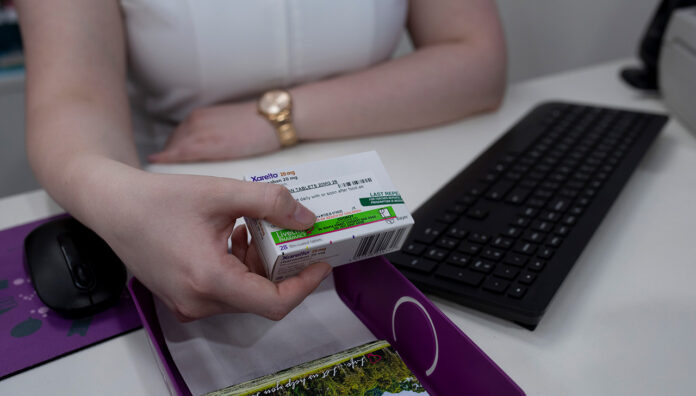Expert advice for applying the right dosage instructions on medicine labels on a case-by-case basis.
How do you word instructions on dispensing labels? Could some simple changes make your instructions clearer for patients?
Claire Antrobus MPS, Manager, Practice Support at PSA explains the importance of simple and explicit dosing instructions tailored to medicine type, dosing requirements and patient comprehension.
What do guidelines say about how to make instructions ‘explicit and clear’?
Most importantly, dosing instructions on dispensed medicine labels should be explicit and clear, according to the Australian Commission on Safety and Quality in Health Care’s National Standard for Labelling Dispensed Medicines 2021.
Using common, everyday words improves readability and comprehension by consumers, says the standard.
Example:
| Preferred | Not preferred |
|---|---|
| Take 1 tablet in the morning Take 1 tablet in the evening | Take one tablet in the morning and in the evening’ OR ‘Take one tablet twice a day. |
The ‘Good dispensing practice’ chapter of the Australian Pharmaceutical Formulary and Handbook (APF) is consistent with the National Standard for Labelling Dispensed Medicines and contains concise practical advice on how pharmacists can meet the standard.
Should dosage intervals always be specific?
The standard says that dispensing label instructions should include a specific dosing interval (e.g. every 4 hours) if this level of specificity is critical to the dosing of the medicine.
Common medicines for which specific dosing intervals are important include novel anticoagulants (e.g. apixaban), heparins, antimicrobial medicines and nitrates.
For example, the recommended dosage of Paxlovid is 300 mg nirmatrelvir (two 150 mg tablets) with 100 mg ritonavir (one 100 mg tablet) taken together orally every 12 hours for 5 days.
A narrow time interval range (e.g. every 3–4 hours) or using time periods (e.g. morning, midday, evening, bedtime) can allow some flexibility for patients to incorporate dosing of their medicine into their daily routine, if this is appropriate for the medicine in question.
Pharmacists should use professional judgement to determine when flexible dosing instructions are appropriate.
Does the type of medicine influence how dosing instructions should be written?
For medicines that are dosed infrequently (e.g. once or twice a day) it is usually preferable to write the dose instructions according to the time of day rather than according to time periods – unless the level of specificity of time interval is critical to the dosing of the medicine.
For medicines that are dosed more frequently (e.g. more than three times a day) it might depend on the medicine and how important it is for the dosing times to be specific.
For example, for medicines used for pain relief, it is more appropriate to write the dosing interval within a narrow range (e.g. every 4–6 hours).
When should specific times be included on the dispensing label?
For medicines such as levodopa and other medicines to treat Parkinson’s disease, a specific dosing schedule is therapeutically necessary to prevent the wearing-off phenomenon.
The prescriber may have prescribed a dosing schedule for levodopa (e.g. 7.00 am, 11.00 am, 2.00 pm, 5.00 pm) that has been agreed with the patient according to their medicine needs, food intake and daily routine. In this situation, the label instructions should include these specific times and align with the prescription instructions.
Written words are never an effective substitute for verbal communication when dispensing medicines
One of the most important factors to consider when writing dose instructions on the label is the individual patient and their health literacy. You should tailor both verbal and written health information (including information about how to take a medicine) to the patient’s needs.
Use terms and concepts that patients can understand and relate to. Check the patient can understand the dosing instructions on the dispensing label when discussing the medicine and amend if necessary.






 ‘We’re increasingly seeing incidents where alert fatigue has been identified as a contributing factor. It’s not that there wasn’t an alert in place, but that it was lost among the other alerts the clinician saw,’ Prof Baysari says.
‘We’re increasingly seeing incidents where alert fatigue has been identified as a contributing factor. It’s not that there wasn’t an alert in place, but that it was lost among the other alerts the clinician saw,’ Prof Baysari says.





